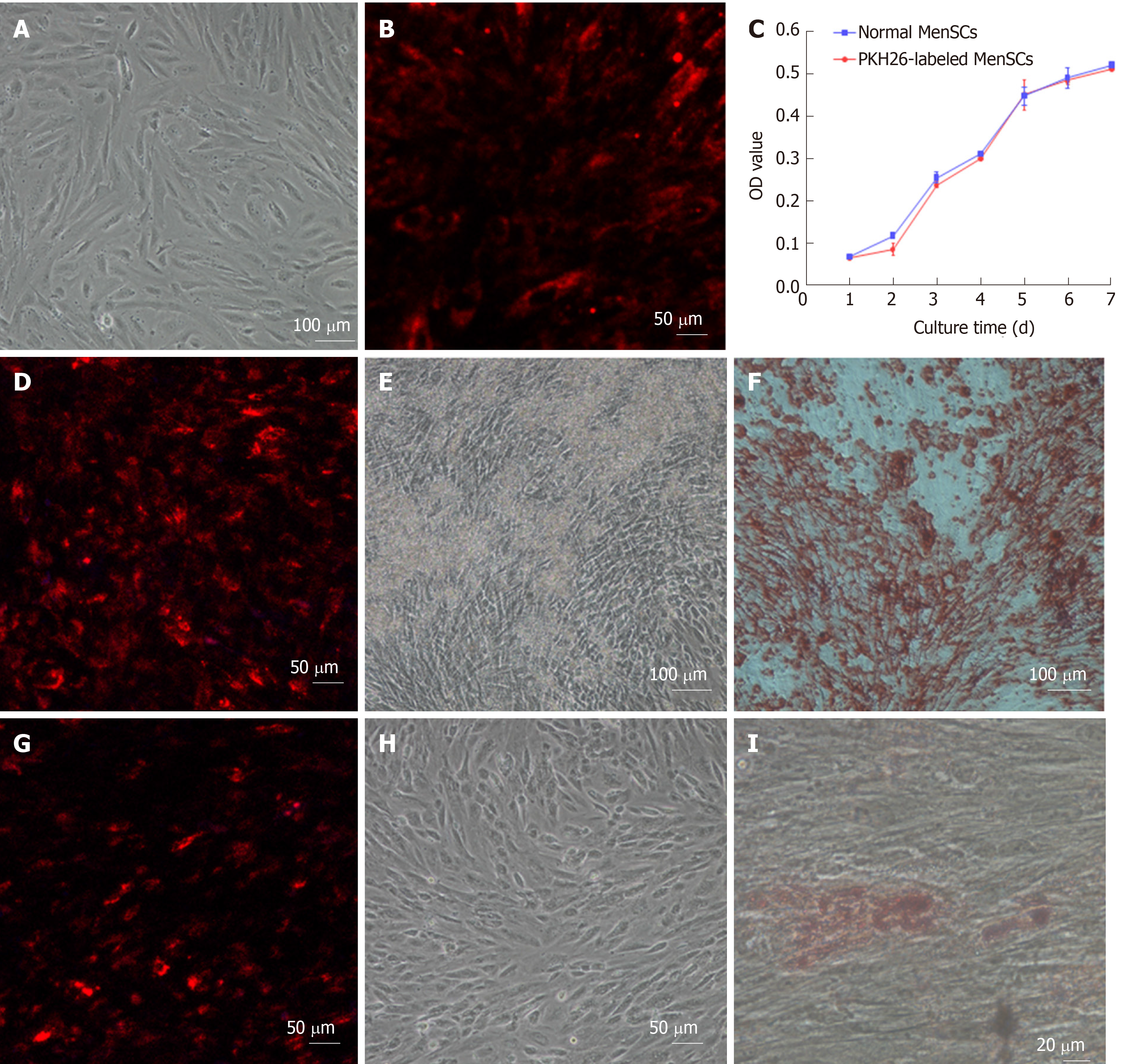Copyright
©The Author(s) 2019.
World J Gastroenterol. Nov 7, 2019; 25(41): 6190-6204
Published online Nov 7, 2019. doi: 10.3748/wjg.v25.i41.6190
Published online Nov 7, 2019. doi: 10.3748/wjg.v25.i41.6190
Figure 4 Effect of PKH26 on the cytomorphology, viability and multipotential differentiation of menstrual blood stem cells.
A: Morphology of the fifth passage of menstrual blood stem cells (MenSCs) without PKH26 labelling (× 10); B: the fifth passage of MenSCs with PKH26 labelling after 3 d (× 20); C: Viability of PKH26-labelled MenSCs and non-labelled normal MenSCs; D: Osteogenic differentiation of PKH26-labelled MenSCs under a confocal microscope (× 20); E: Bone nodules formed by differentiated osteocytes were visualized (× 10); F: PKH26-labelled MenSCs underwent osteogenic differentiation after alizarin red S staining (× 10); G: Adipogenic differentiation of PKH26-labelled MenSCs under a confocal microscope (20 ×); H: Differentiated adipocytes were visualized before oil red O staining (× 10); I: Differentiated adipocytes contained lipid droplets after oil red O staining (× 40). MenSCs: Menstrual blood stem cells.
- Citation: Cen PP, Fan LX, Wang J, Chen JJ, Li LJ. Therapeutic potential of menstrual blood stem cells in treating acute liver failure. World J Gastroenterol 2019; 25(41): 6190-6204
- URL: https://www.wjgnet.com/1007-9327/full/v25/i41/6190.htm
- DOI: https://dx.doi.org/10.3748/wjg.v25.i41.6190









